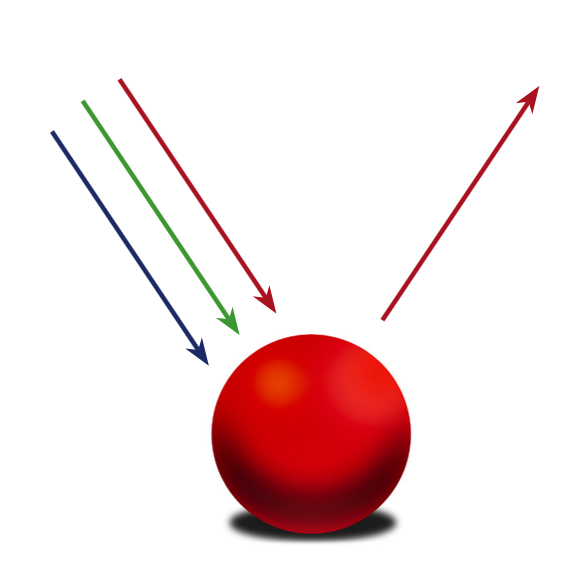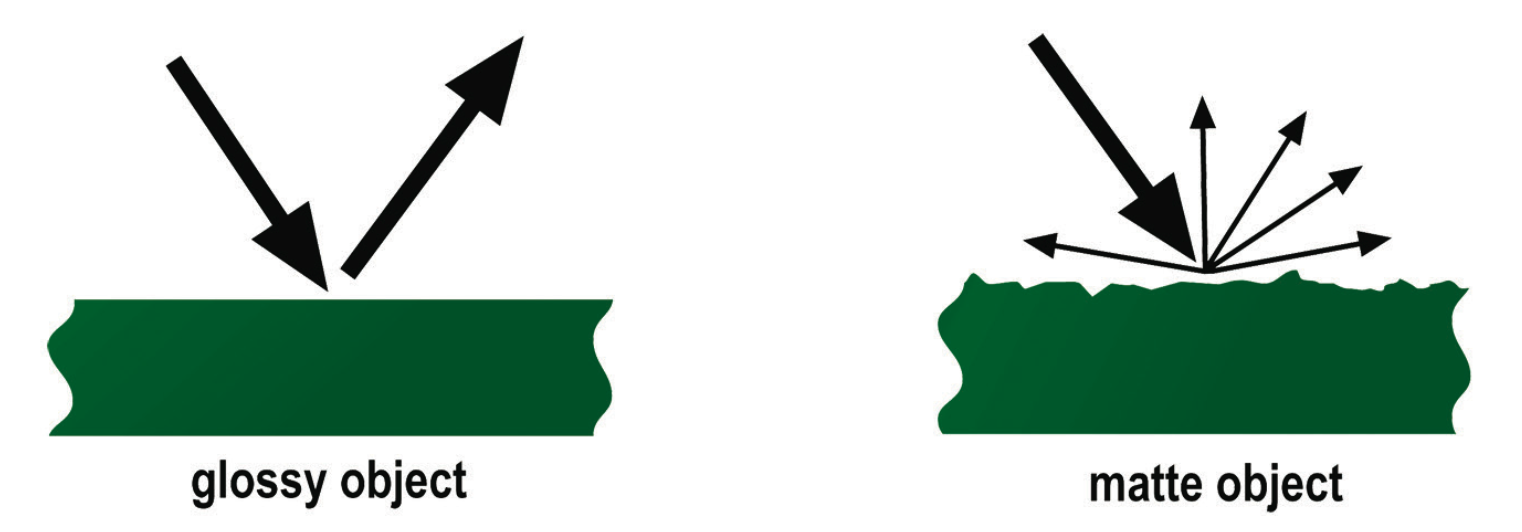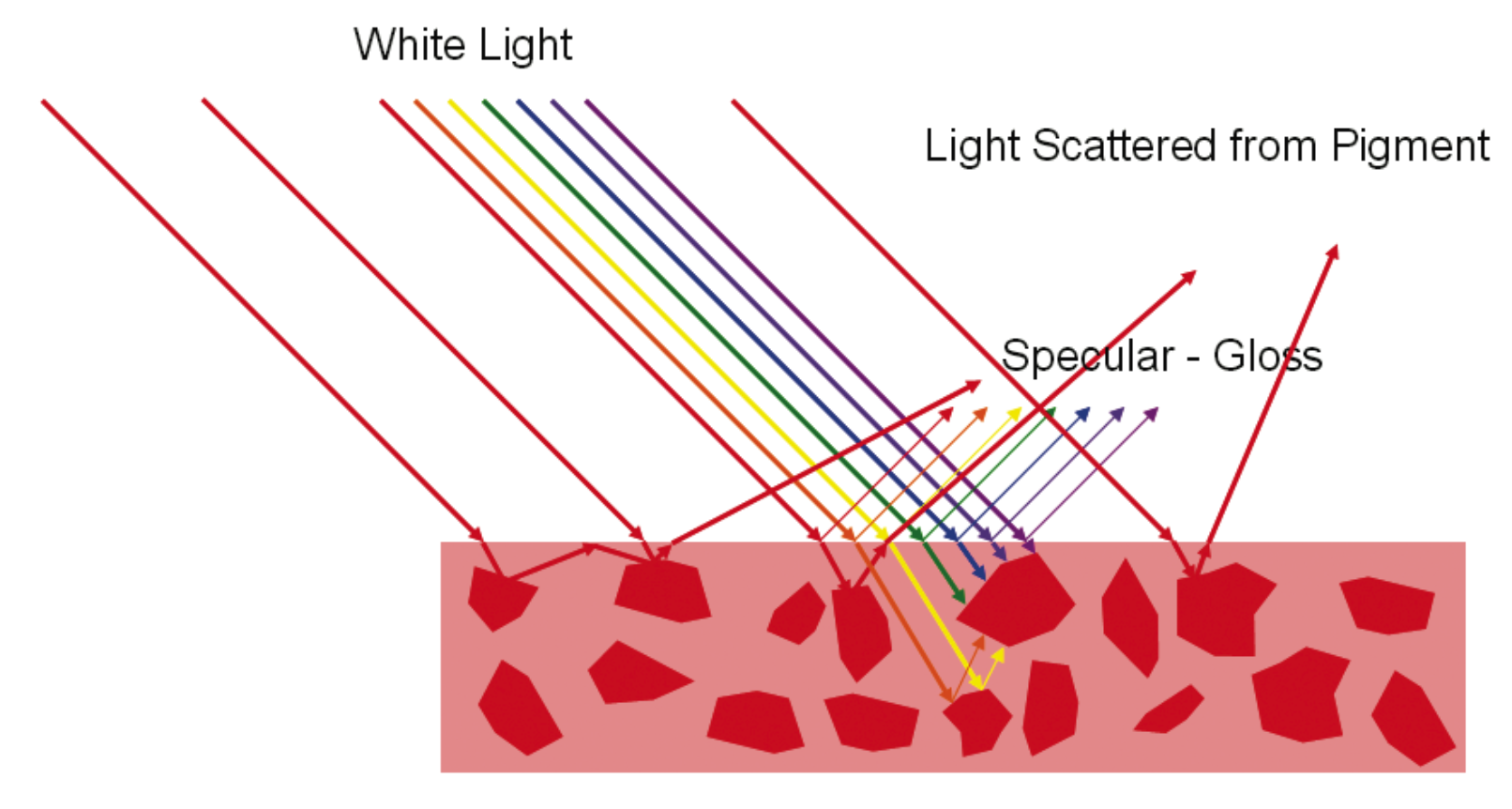You’ve probably heard of popular detectives like Sherlock Holmes and high school sleuth Nancy Drew, who have gained notoriety by solving the toughest crimes. With so many color mysteries out there, we thought it was time to do some investigating of our own in the mysterious realm of color.
In our Color Detective blog series, we’ll be tackling some of the biggest mysteries in color, starting with this red ball…
Which isn’t actually red.
The ball on the left is not green, and the ball on the right is not blue.
The Mystery
If you’re confused, you’re not alone. Since the beginning of our color learning days, we’ve been taught to identify colors like the ones above as red, green, and blue. While this may be the case on the surface, there’s more to this color story.
The secret lies in the colorants used to manufacture each ball, and the way these colorants interact with light to send our brains a color message.
The Investigation
Sir Isaac Newton was one of the more creative thinkers in human history. He observed that “white” light isn’t really white at all, but rather a blended mixture of many colors of light. He came to this conclusion by shining white light through a prism and watching as it refracted into individual components – red, orange, yellow, green, blue, indigo and violet.

We see this dispersion phenomenon in nature when raindrops act as a prism for sunlight, producing a rainbow.
Diagram of dispersion prism courtesy of Wikimedia Commons.
As all of the colors of light shine down, they illuminate the objects around us. This is where colorants come into play.

The Explanation
This “red” ball contains colorants that absorb all of the colors of light, except red. The red light bounces off of the ball, and back into our eyes, causing us to perceive the ball as red.
That means the ball is actually all of the other colors present in the light source, EXCEPT red. As crazy as it sounds, you will never see the actual color of an object, just the color of the light that is reflecting off of it.
What does this mean for manufacturers?
Natural and manmade, colorants are everywhere. They are the inks we put down on paper, the dyes we use to color our fabrics, the pigments we use in paint and plastics, and even the chlorophyll found in plant leaves. Dying your hair or clothing changes the colors of light that are absorbed or reflected, and therefore the color you perceive. So does painting the walls in your home.
There are many things that determine which color of light will be absorbed by an object and which will be reflected back into our eyes. Understanding this perception phenomenon is crucial for anyone in manufacturing.
Here are a few of the things that must be considered when producing colorful products and packaging.
- The Surface – Different surfaces absorb and reflect light differently, giving a different color appearance. Glossy objects reflect light directly, giving the color a shiny appearance, while matte objects scatter reflected light in all directions. Glossy and matte paints are a good example of this phenomenon. You can ask the paint store to mix the same colorants into each, but when you put them on the wall side by side, the color will appear to be different.
Manufacturers must consider how each material will use colorants to absorb and reflect light, and then adjust their color formulations accordingly.

- Type of Colorant –Colorants such as inks, toners, paints, dyes, and pigments all have different reflectance properties. Some pigments even contain special additives like metallic and mica flakes, which change the appearance of color through shimmer and mirror effects, often resulting in different colors depending on the angle of view.
 When formulating and evaluating color, manufacturers must be aware of the characteristics of different colorants and how they will affect the way each color is perceived.
When formulating and evaluating color, manufacturers must be aware of the characteristics of different colorants and how they will affect the way each color is perceived. - The Light Source –There are many different types of light – sunlight, incandescent, fluorescent, LED, UV, nightlight – and each changes the way we perceive a particular color. It makes sense that a light source that doesn’t contain as much red will result in the perception of less red.
 The addition of optical brightening agents makes color evaluation even more complicated. Manufacturers use light booths to visually evaluate how objects appear under different types of light.
The addition of optical brightening agents makes color evaluation even more complicated. Manufacturers use light booths to visually evaluate how objects appear under different types of light.
Now that you know the truth about color, are you looking at the world a little differently? Stay tuned as we solve other color mysteries that you may not even know exist. Or, if you can’t wait, consider our Fundamentals of Color and Appearance seminar, which will answer all of your color questions.


